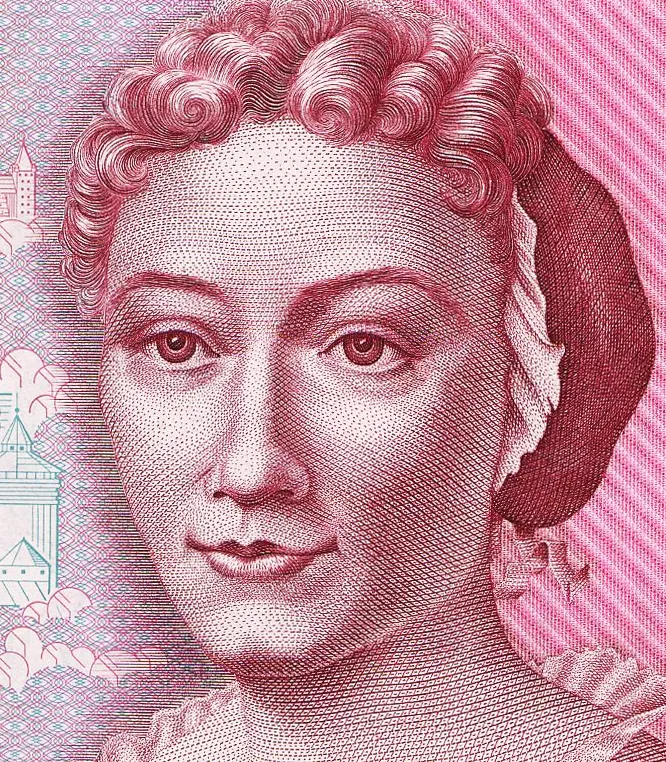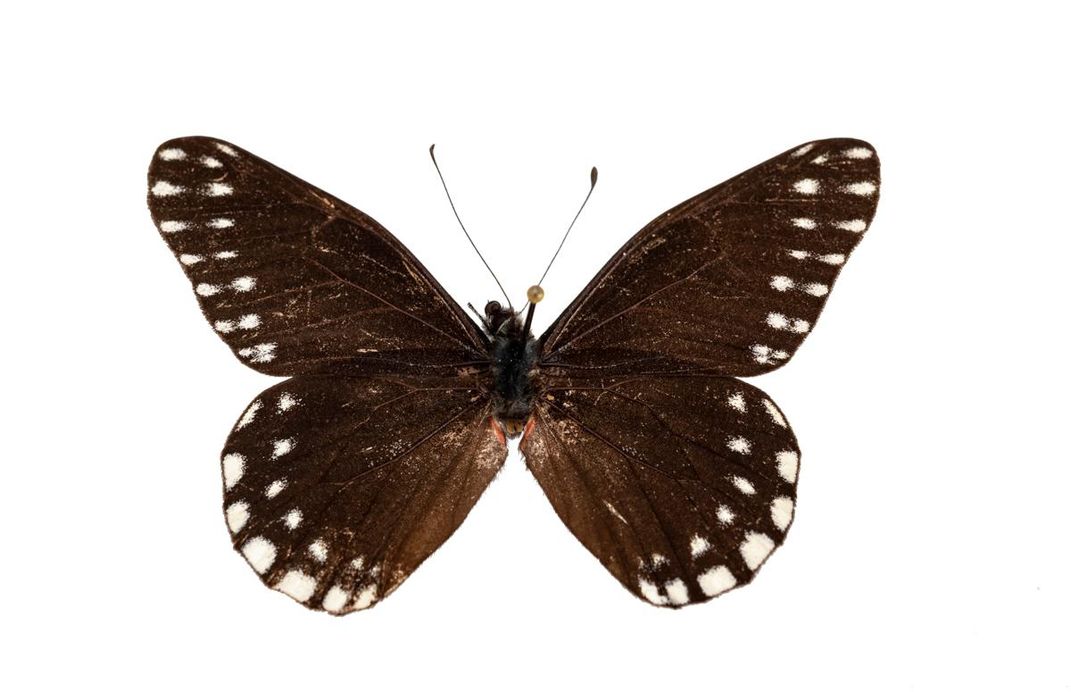New Butterfly Species Named After 17th-Century Female Naturalist
Maria Sibylla Merian documented the lifecycles of moths and butterflies with unprecedented accuracy
/https://tf-cmsv2-smithsonianmag-media.s3.amazonaws.com/filer/a7/40/a740943d-fe8a-4af6-a13a-1b4e59155d52/1810220015.jpg)
From an early age, the 17th century, barrier-breaking naturalist Maria Sibylla Merian loved insects—particularly butterflies. She collected every caterpillar she could find, and watched closely as they shrunk into pupae and then blossomed into fluttery insects. Merian published her meticulous observations in beautifully illustrated books, bringing empirical rigor to a field largely dominated by men who clung to the belief that insects generated spontaneously. And in a fitting new development, a rare butterfly has been named in Merian’s honor.
The newly named butterfly is known to scientists from only two male specimens, reports Sarah Laskow of Atlas Obscura. One has been held by the Smithsonian Natural History Museum since 1981, but for many years it languished in a drawer, forgotten. Recently, however, a University of Florida graduate student named Pablo Sebastián Padrón stumbled upon the butterfly in the collections. He sent a picture of the specimen to Shinichi Nakahara, a lepidopterist at the Florida Museum of Natural History, hoping that Nakahara would be able to identify it. But Nakahara was stumped.
The insect, which had been found in Panama, was strange. It had several distinctive features of the large Pieridae family of butterflies, but unlike most Pieridae, it was not colorful. Instead, the butterfly was black, with two striking rows of white dots lining its wings.
Several months later, as luck would have it, Mississippi State University entomologist John MacDonald happened to find a similar specimen, which had also been sourced from Panama. MacDonald sent a photo of the butterfly to Nakahara, who in turn requested one of its legs so he could perform genetic testing. DNA confirmed that the two butterflies belonged to the same pierid species—one that had never been described before.
In a paper introducing the butterfly, Nakahara and his colleagues name the species Catasticta sibyllae, in honor of Maria Sibylla Merian. A number of creatures—including a Cuban sphinx moth, a species of cane toad, a snail, a lizard, a bird-eating spider, a genus of praying mantises, a genus of exotic flowering plants, a species of bugle lily, and two sub-species of butterfly—have already been named after her. But this is the first time that a fully-fledged butterfly species will bear Merian’s name.
“Since this is such a distinctive butterfly, we wanted to name it after someone who would deserve it,” Nakahara says.
Born in Germany in 1647, Merian was an artist by training. She studied under her stepfather, the still-life painter Jacob Marrel, and often painted flowers in her early career. Then, she turned her attention to the silk worms, caterpillars, butterflies and moths that so fascinated her. In 1679, she published Der Raupen wunderbarer Verwandlung (The Wondrous Transformation of Caterpillars), which included lively and detailed illustrations of the insects’ life cycles. It was, according to Andrea Wulf of the Atlantic, “unlike any other book yet written.”
No previous work had so precisely detailed insects’ distinct life phases. What’s more, Merian did not draw her subjects as disembodied figures against a blank page. She depicted them on plants and branches, and in relation to one another. “And at a time when other scientists were trying to make sense of the natural world by classifying plants and animals into narrow categories, Merian looked at their place within the wider natural world,” Wulf writes. “She searched for connections where others were looking for separation.”
Merian was married at the age of 16, but she split from her husband in 1685 and moved away with her two daughters—first to a religious colony in modern-day Netherlands, then to Amsterdam. In 1699, she and her youngest daughter embarked on a two-year trip to Surinam, then a Dutch colony in South America. There, Merian waded into the jungle to study foreign species, which she illustrated with her characteristic attention to both biology and beauty. The result of that trip was the 1705 book Metamorphosis insectorum Surinamensium (“The Metamorphosis of the Insects of Surinam”), which included around 60 engravings showing the development of various insects.
Merian died in 1717, more than 15 years before the Swedish naturalist Charles Linnaeus introduced his ground-breaking system for classifying the natural world. Linnaeus, in fact, relied on Merian’s work to describe a number of species. Her illustrations were so accurate that modern entomologists have been able to identify the genus of 73 percent of the butterflies and moths in Metamorphosis insectorum Surinamensium, and match 56 percent of the insects to precise species.
“Merian was centuries ahead of her time, and her discoveries changed the course of entomology,” Nakahara says. “The fact that she accomplished so much against all odds—as a divorced woman in the 17th century who taught herself natural history—is remarkable. And she did it so beautifully.”

